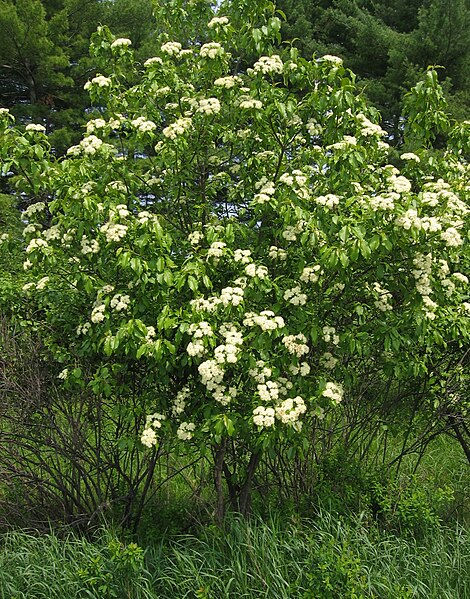Nannyberry Identification – Viburnum lentago
Heads up
When wandering through the forests and fields, you might come across a shrub or small tree with glossy green leaves, showing off a blend of reds and burgundies in the autumn. This beautiful plant, known as Viburnum lentago, is commonly referred to as the Nannyberry.
For those who might be unfamiliar with botanical names, ‘Viburnum‘ is the genus and ‘lentago‘ is the species name. They belong to the Adoxaceae family, which is a family that boasts of many other interesting plants. Nannyberry has several other common names, like sheepberry or sweet viburnum. Each name has its roots and stories, often tied to local cultures or the specific regions where the plant grows.
Nannyberry: Key Parts in Photos




Where to find it
If you’re hoping to spot a Nannyberry in the wild, you’re most likely to succeed in the moist soil of woods, along streams, or even in some drier upland forest areas. Nannyberry thrives predominantly in the Eastern and Central parts of North America.
How to identify Nannyberry
The bark of the Nannyberry is distinctive. It sports a grayish-brown hue interspersed with shallow furrows or ridges. On close examination, you can notice the bark’s rough texture and the occasional presence of fine cracks.
The leaves of this plant are arranged oppositely on the branches, they’re ovate in shape, resembling the structure of an egg, but with a pointed tip. Their finely serrated edges give them a slightly rugged look, but their glossy dark green surface balances it with elegance. And come fall, these leaves turn to a brilliant palette of red and burgundy hues.
The flowers, creamy white in color, exhibit five delicate petals each accompanied by long, slender stamens. Though they don’t emit a fragrance, they cluster together forming flat-topped cymes.
As the seasons progress, these flowers give way to fruits. The Nannyberry produces blue-black, berry-like drupes, each about 1/3 inch long. As they ripen during the autumn months, they present a sweet flavor with a hint of bitterness or sourness. While they’re a favorite among many birds, humans can enjoy them too. They are often used in jellies or eaten raw.
